
Succulents are a popular choice for gardeners due to their diverse shapes, vibrant colors, and low maintenance needs. One of the most rewarding aspects of growing succulents is their ability to propagate through their leaves, allowing gardeners to expand their collection with minimal effort. In this guide, we will explore the step-by-step process of propagating succulent leaves to ensure a flourishing garden.
Understanding Succulent Propagation
Succulent propagation is the process of growing new plants from various parts of the original plant, such as leaves, stems, or offsets. Leaf propagation is a popular method as it requires minimal resources and is suitable for a wide range of succulent species. By understanding the basics of succulent biology, gardeners can optimize conditions for successful propagation.
Selecting the Right Leaves
To begin propagating succulents, it’s crucial to choose the right leaves. Healthy, mature leaves from the bottom of the plant are ideal, as they contain the necessary nutrients to support new growth. Gently twist the leaf from the stem, ensuring a clean break. Avoid any leaves that are damaged, shriveled, or diseased, as these are less likely to propagate successfully.
Preparing the Leaves for Propagation
Once the leaves are selected, allow them to dry and callous over for a few days. This step is vital as it prevents the leaves from rotting when placed in soil. Place the leaves in a shaded, dry area, and check for the formation of a callous before proceeding to the next stage.
Planting the Leaves
After the leaves have calloused, they are ready to be planted. Use a well-draining succulent or cactus potting mix to encourage healthy root development. Lay the leaves flat on the soil surface, ensuring that the cut end is in contact with the soil. It’s important not to bury the leaves, as this can impede root growth and increase the risk of rot.
Caring for the Propagating Leaves
Proper care is essential during the propagation process. Place the leaves in a warm, bright location, but avoid direct sunlight, which can cause them to burn. Water sparingly, allowing the soil to dry out completely between waterings. Overwatering is a common mistake that can lead to rot, so it’s important to be cautious.
Monitoring Growth and Development
Within a few weeks, small roots and new rosettes should begin to form at the base of the leaves. This indicates successful propagation. Continue to provide the same care, and once the new plants are established, they can be transferred to individual pots or added to garden arrangements.
Common Challenges and Solutions
Propagating succulents can sometimes present challenges, such as leaf rot, slow growth, or failure to root. To overcome these issues, ensure that you are using the correct soil mix, provide adequate light, and avoid overwatering. Patience is key, as some succulents may take longer to propagate than others.
Expanding Your Succulent Collection
Once you have mastered the art of propagating succulent leaves, you can experiment with different species and varieties. This not only enhances your gardening skills but also contributes to a diverse and visually appealing garden. Succulent propagation is a sustainable and cost-effective way to grow your collection and share plants with fellow gardeners.
In conclusion, propagating succulent leaves is a simple yet rewarding process that can lead to a thriving garden. By following the steps outlined in this guide, you can successfully propagate succulents and enjoy the beauty and diversity they bring to your space.
Succulent propagation is the process of growing new plants from various parts of the original plant. Healthy, mature leaves from the bottom of the plant are ideal for propagation. Allow the leaves to dry and callous over for a few days before planting. Use a well-draining succulent or cactus potting mix for planting the calloused leaves. Place the leaves in a warm, bright location and water sparingly to avoid rot. Small roots and new rosettes should begin to form at the base of the leaves within a few weeks. Succulent propagation is a sustainable and cost-effective way to grow your collection. 
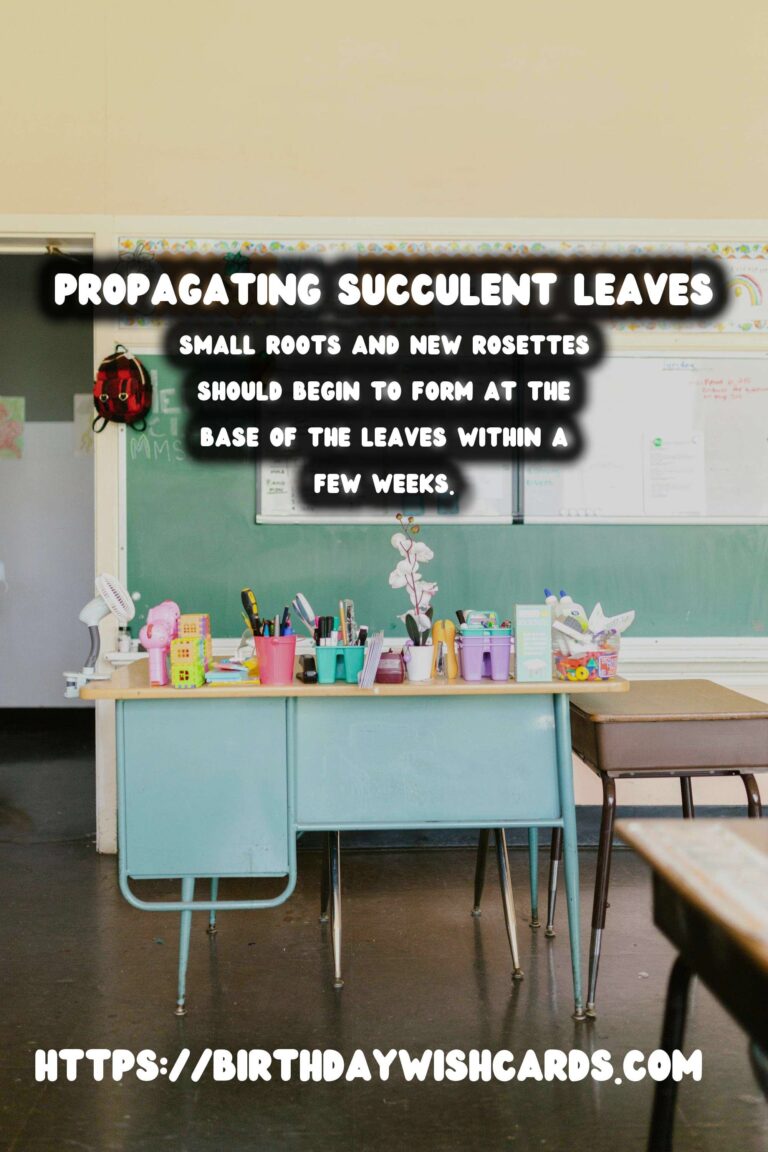
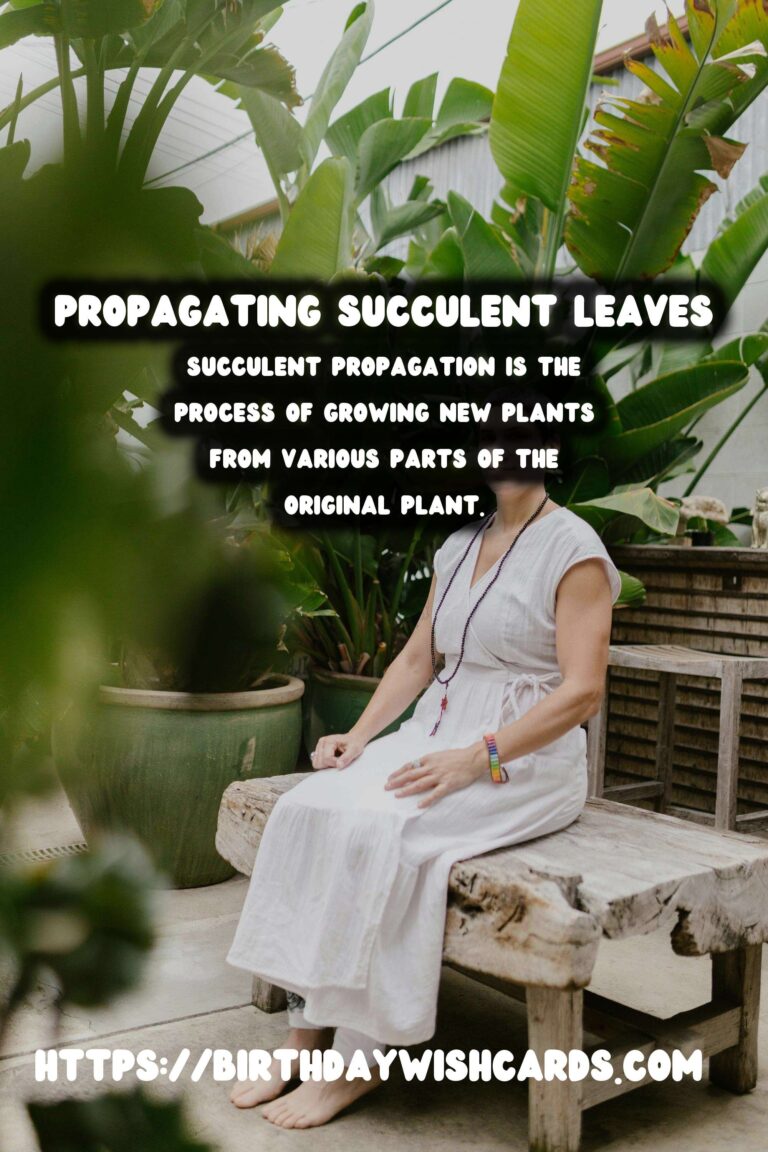
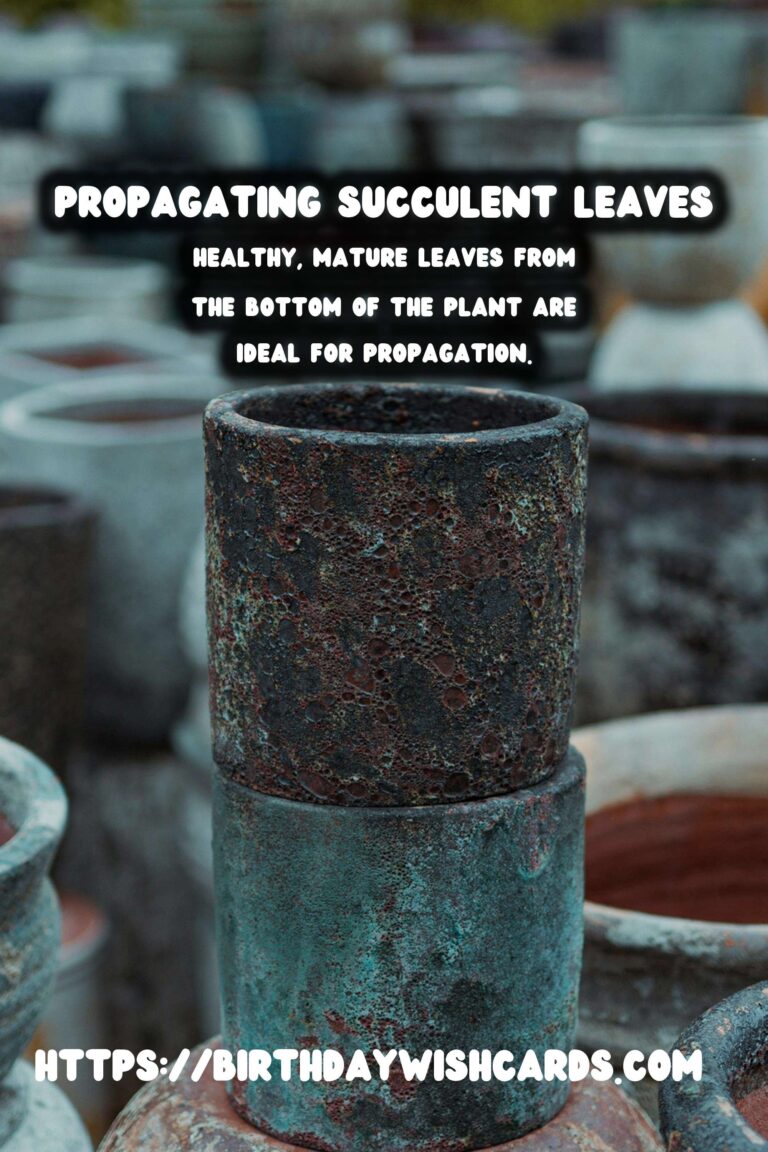
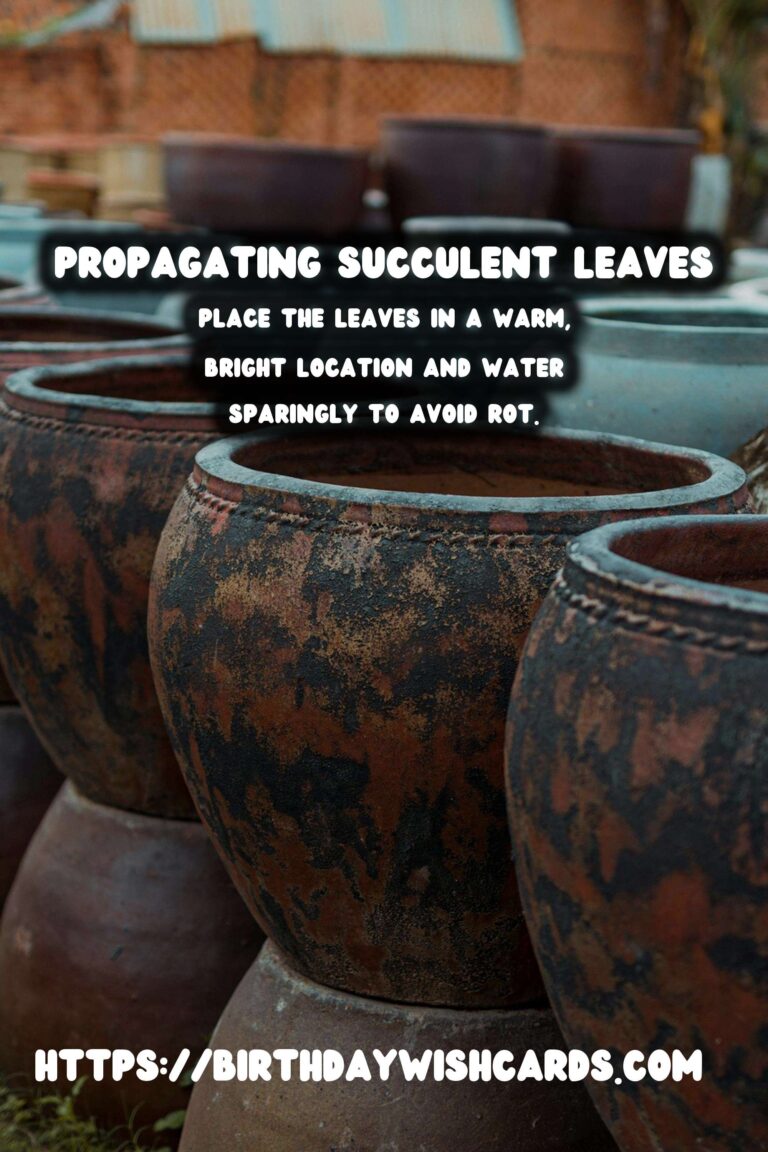
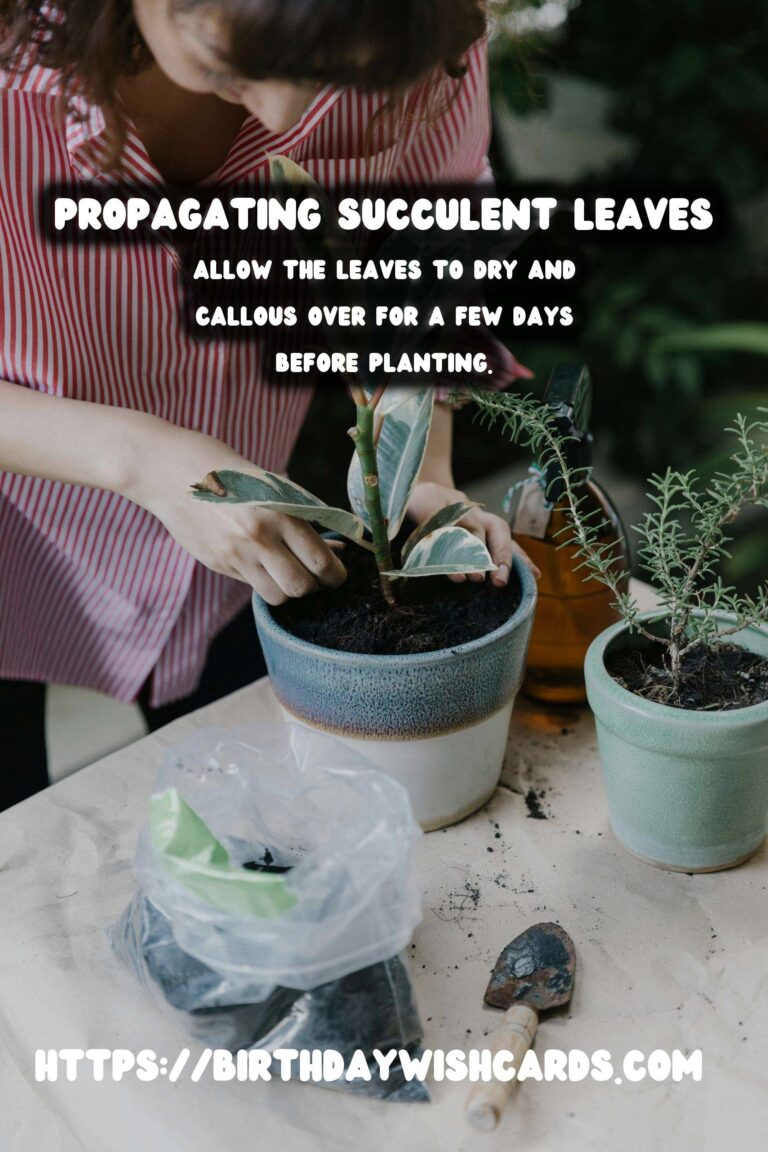
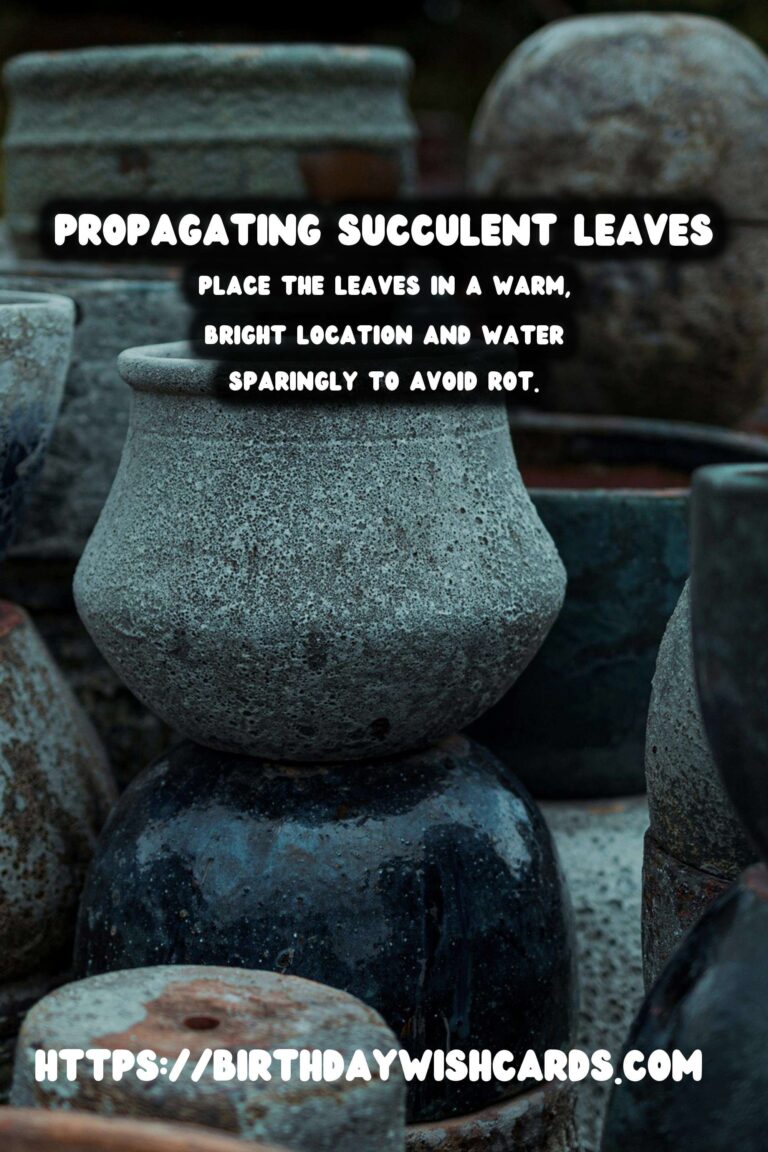

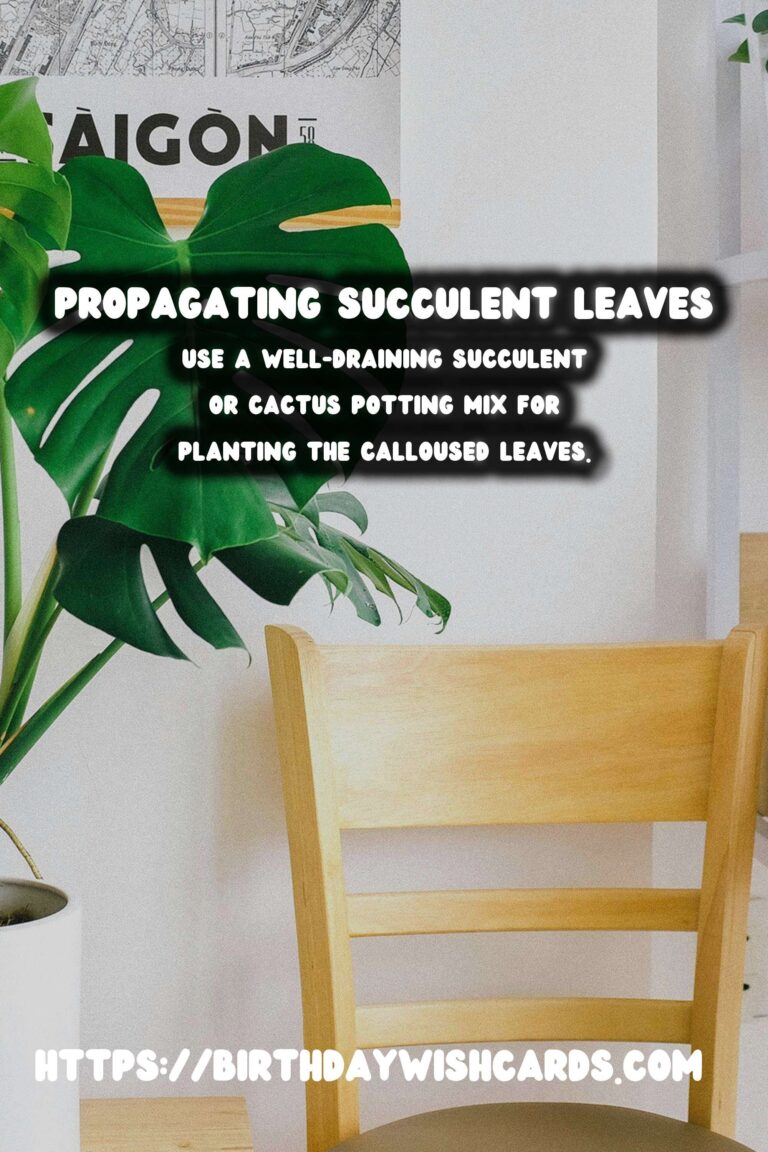
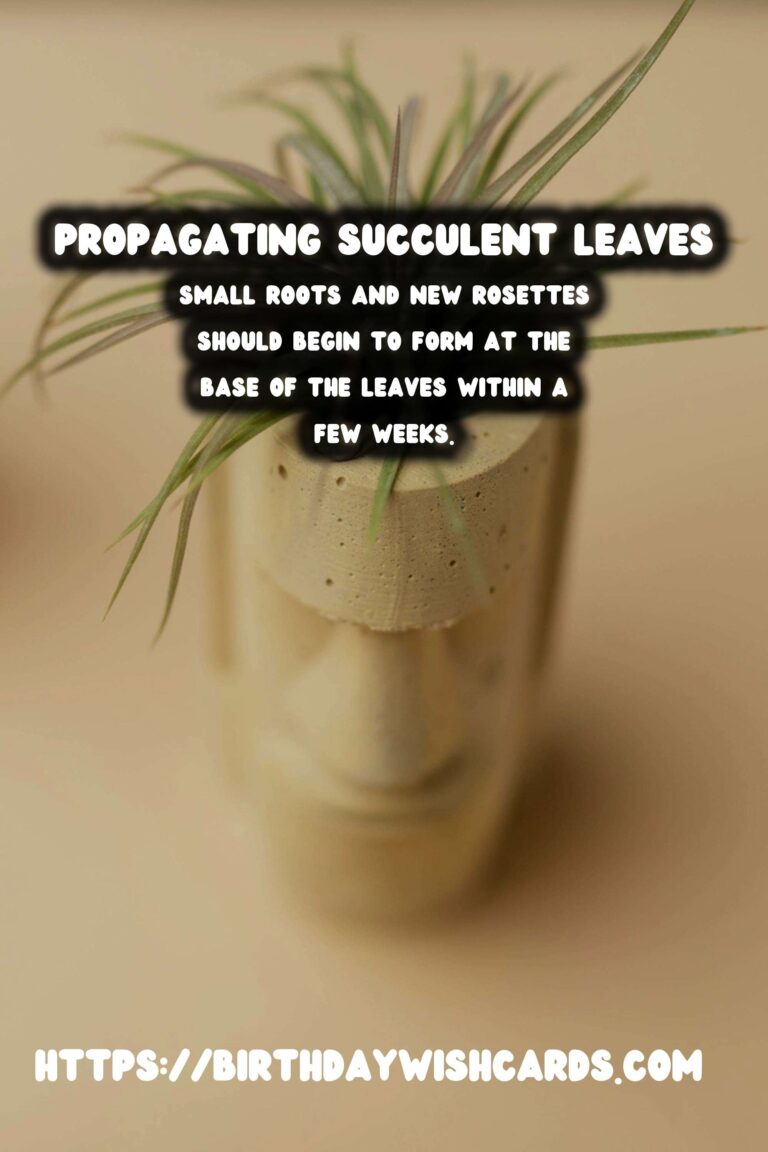
#Succulents #Gardening #PlantPropagation #SucculentCare #HomeGarden




